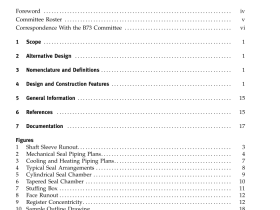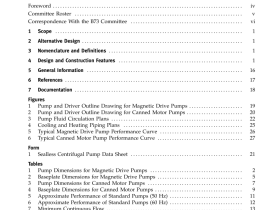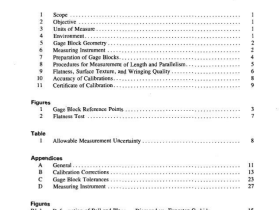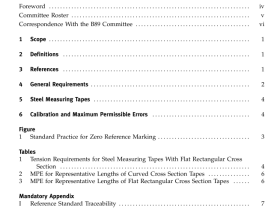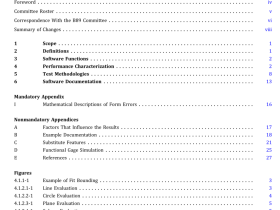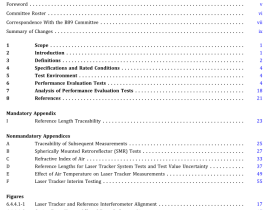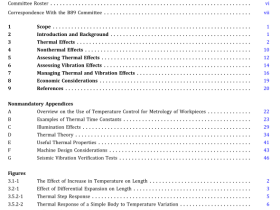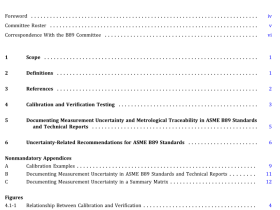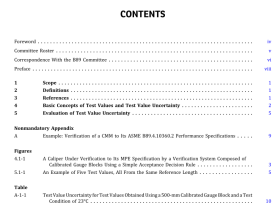ASME B89.4.23 pdf download
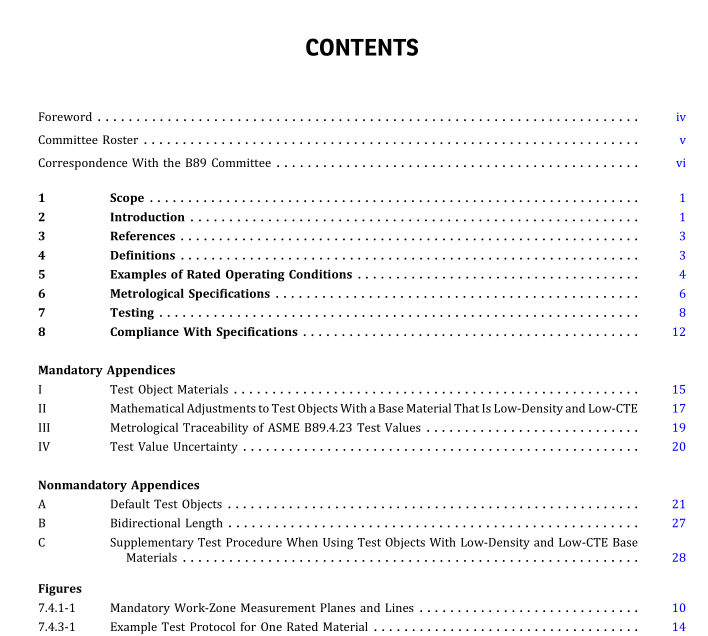
ASME B89.4.23 pdf download X-Ray Computed Tomography (CT) Performance Evaluation
1 SCOPE
This Standard specifies the dimensional measurement accuracy of industrial X-ray computed tomography (CT) systems for length, size, and form measurands of sphere-based test objects made of homogeneous materials. Medical CT systems are outside the scope of this Standard. The material properties of the measured test objects arerestrictedtothreeclassesofmaterialselectedtoberepresentativeofindustrialmaterials: plasticpolymers,aluminum alloys, and steel alloys; other materials are outside the scope ofthis Standard. However, this Standard may be used as a guide fortestingthe performance ofa CT system forothermaterials. The evaluation ofworkpieces composed ofmultiple materials orofmaterials withdensitygradients, i.e., gradual densityvariations withinthematerial, is outsidethe scopeof this Standard.
This Standard is applicable to dimensional measurements made at the surface ofthe workpiece, i.e., at the workpiece material–air interface, including those ofinternal cavities. The effect ofcomplex workpiece-material influence is simu- lated bytestobjects composed ofspheres (servingas the metrological geometric elements) and an obstructingbody; the obstructingbody’sdimensionsareuncalibratedanditsshapemaybearbitrary.Thespheresandobstructingbodyshallbe ofthe same class ofmaterial and theircombined length shall notexceed the maximum penetration length forthis class of material, as stated by the CT system manufacturer.
This Standard applies to a variety ofCT systems thatmay vary by scanning mode and system components involved in the acquisition of images. In cases where a system provides multiple configurations of X-ray sources, detectors, and scanning modes, the dimensional measurement accuracy may be specified for each scanning mode. This Standard does not mandate testing (by either the CT manufacturer or the user) to verify CT performance.
The amountoftesting, andwhichpartywillbearthe costoftesting, is abusiness decisionandmustbe negotiatedbetweenthe two parties. Calibrated testobjects can be expensive; hence, the parties should recognize the costs involved and plan the testing accordingly.
Due to contrast sensitivity issues that can arise when X-rays must penetrate through large amounts ofmaterial, this Standarddoes notprovidemaximumpermissibleerrorspecifications thatapplyto detectinghighspatial-frequencyform errors.
2 INTRODUCTION
ASME B89 performance evaluation standards for dimensional coordinate measuring systems specifythe dimensional measuring accuracy for common measurements ofindustrial workpieces. Ideally the uncertainty associated with each point coordinate within the system’s measurement work zone would be reported, but because the accuracy of an in- dividual point coordinate in space is impossible to experimentally verify, ASME B89 standards typically use a point-to- point length measurand that is both realizable and practical for system testing. The advantage ofevaluating test objects with point-to-pointlength measurands is twofold: first, testobjects are simple to manufacture and calibrate, and second, differentpoint-to-pointlength measurands can be used to evaluate differenteffects. Long-range effects are evaluated by the point-to-pointlength error between the center oftwo spheres on a testobject, which can span the entire work zone. Short-rangeeffects areevaluatedbytheerrors inthepoint-to-pointdistancefromthecenterofthetestspherestovarious points on their surface, i.e., sphere form measurands. Image thresholding issues thatare associated with the determina- tion of a surface are evaluated by the error of the size of the test spheres.
